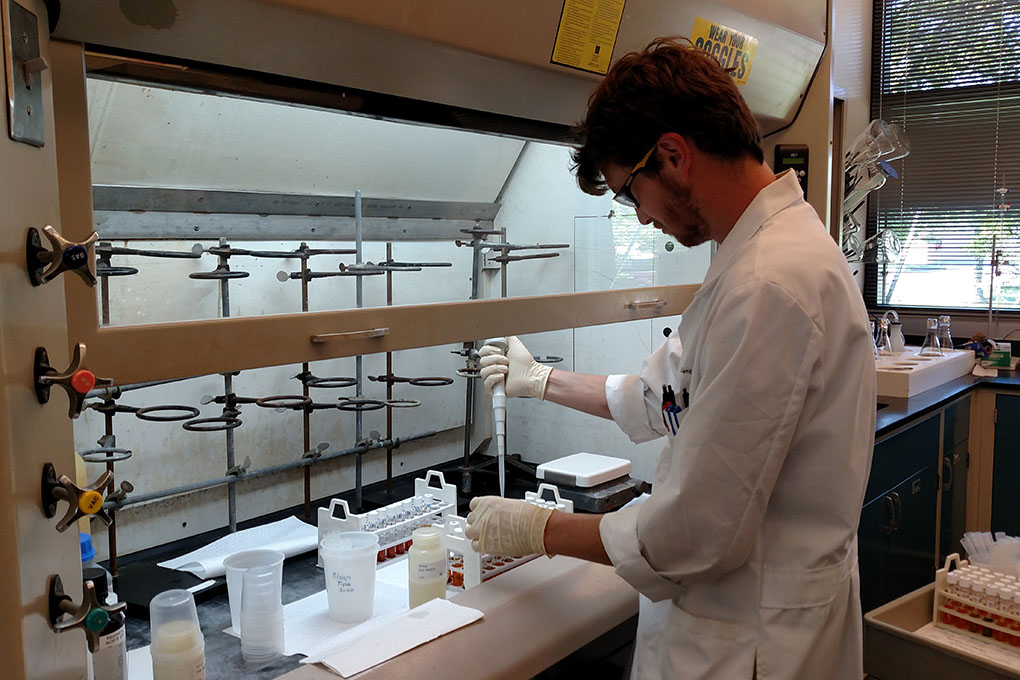10,000,000 gallons a day — America reveals the water tech no one saw coming – ecoportal.net

Report on El Paso’s Advanced Water Purification Initiative and its Alignment with Sustainable Development Goals
Introduction: Addressing Urban Water Scarcity Through Sustainable Innovation
The city of El Paso, Texas, situated in an arid region with an average of 302 days of sunshine and less than nine inches of annual rainfall, faces significant water scarcity challenges exacerbated by climate change. In response, the city has developed a forward-thinking water management strategy that strongly aligns with several United Nations Sustainable Development Goals (SDGs). By investing in advanced water purification technology, El Paso is building resilience and ensuring a sustainable water future for its residents.
Project Overview: A Direct Contribution to SDG 6 (Clean Water and Sanitation)
El Paso Water, the city’s utility, is constructing a state-of-the-art water purification facility designed to produce 10 million gallons of purified water daily from the city’s wastewater stream. This initiative is a direct and impactful measure to achieve the targets of SDG 6: Clean Water and Sanitation, which aims to ensure the availability and sustainable management of water for all. The project will supplement the city’s dwindling traditional water sources, such as the Rio Grande and the Hueco Bolson aquifer, securing a safe and reliable drinking water supply for its 700,000 residents.
Advanced Purification Process for Safe Potable Reuse
The facility’s multi-barrier treatment process was validated through a successful pilot study initiated in 2016, with the Texas Commission on Environmental Quality (TCEQ) authorizing the full-scale design. The process ensures that the recycled water meets all potable standards through four key stages:
- Reverse Osmosis: A membrane filtration process separates pure water from other substances.
- Advanced Oxidation: Hydrogen peroxide and UV light are used to destroy any remaining organic contaminants and microorganisms.
- Activated Carbon Filtration: Contaminants are absorbed by activated carbon, further polishing the water.
- Disinfection: Chlorine is added as a final safety barrier to ensure the water is free from pathogens before entering the public water supply.
Continuous online monitoring, a TCEQ requirement, provides an additional layer of safety, ensuring the integrity of the treatment process.
Broader Impacts on Sustainable Development
Enhancing Urban Resilience and Climate Action (SDG 11 & SDG 13)
This project is a critical adaptation strategy to the intensifying effects of climate change. By diversifying its water portfolio away from climate-vulnerable sources, El Paso is strengthening its resilience. This directly supports SDG 11: Sustainable Cities and Communities, by making the city’s infrastructure more robust, and SDG 13: Climate Action, by implementing tangible solutions to climate-related water stress.
Fostering Innovation and Responsible Consumption (SDG 9 & SDG 12)
The El Paso facility represents a significant advancement in water infrastructure and technology, contributing to SDG 9: Industry, Innovation, and Infrastructure. Furthermore, the project embodies the principles of a circular economy, a key component of SDG 12: Responsible Consumption and Production. By treating wastewater as a valuable resource rather than a waste product, the city promotes sustainable water management. This commitment is reinforced by a planned public education campaign to discourage the disposal of chemicals and pharmaceuticals, fostering responsible consumption habits among residents and businesses.
Conclusion: A Replicable Model for Global Water Security
Scheduled to go online in 2028, El Paso’s direct potable reuse facility will be the first of its kind in the United States, setting a precedent for other water-scarce municipalities. Cities such as Phoenix and Tucson, along with other communities in Texas, are exploring similar solutions. As climate change continues to strain global water resources, innovative and sustainable approaches like El Paso’s are essential for achieving the Sustainable Development Goals and ensuring water security for future generations.
Analysis of Sustainable Development Goals in the Article
1. Which SDGs are addressed or connected to the issues highlighted in the article?
The article on El Paso’s water purification project addresses several interconnected Sustainable Development Goals (SDGs). The analysis identifies the following primary SDGs:
- SDG 6: Clean Water and Sanitation: This is the most central SDG, as the entire article focuses on ensuring access to clean and safe drinking water for El Paso’s residents in a water-scarce environment. The project directly tackles water quality, wastewater treatment, and water resource management.
- SDG 9: Industry, Innovation, and Infrastructure: The article highlights the construction of a “state-of-the-art water purification facility.” This represents a significant investment in resilient and sustainable infrastructure, driven by technological innovation (reverse osmosis, UV treatment) to solve a critical resource challenge.
- SDG 11: Sustainable Cities and Communities: The initiative is a city-level response to make El Paso more resilient and sustainable. By securing a stable water supply against the backdrop of climate change (hotter, drier conditions) and a dwindling natural water source (Rio Grande River), the city is enhancing its long-term viability for its 700,000 residents.
2. What specific targets under those SDGs can be identified based on the article’s content?
Based on the specific actions and goals described in the article, the following targets can be identified:
- Target 6.1: By 2030, achieve universal and equitable access to safe and affordable drinking water for all.
- The project’s main goal is to “supply 10 million gallons of a purified reserve” that will “run directly into the city’s drinking water supply” for its “700,000 residents,” ensuring the water meets “all potable standards.”
- Target 6.3: By 2030, improve water quality by reducing pollution, eliminating dumping and minimizing release of hazardous chemicals and materials, halving the proportion of untreated wastewater and substantially increasing recycling and safe reuse globally.
- The facility’s process, which treats the “city’s wastewater stream” to create potable water, is a direct example of increasing recycling and safe reuse. The plan to educate residents to “discourage the disposal of chemicals and pharmaceuticals down the drain” also addresses reducing pollution at the source.
- Target 6.4: By 2030, substantially increase water-use efficiency across all sectors and ensure sustainable withdrawals and supply of freshwater to address water scarcity.
- The project is a direct response to extreme water scarcity, evidenced by “annual rainfall of less than nine inches” and the drying up of the Rio Grande River. By creating a new water source from wastewater, the city is addressing scarcity and ensuring a sustainable supply.
- Target 9.1: Develop quality, reliable, sustainable and resilient infrastructure… to support economic development and human well-being.
- The article describes the construction of a “state-of-the-art water purification facility,” which is a clear example of developing resilient infrastructure to ensure human well-being (access to water) in the face of climate challenges.
- Target 11.b: By 2020, substantially increase the number of cities and human settlements adopting and implementing integrated policies and plans towards inclusion, resource efficiency, climate change adaptation and disaster risk reduction.
- El Paso’s project is a city-level plan for resource efficiency (water recycling) and climate change adaptation (responding to a “hotter, drier climate”). The article notes that other cities like Phoenix and Tucson are planning to follow suit, indicating a trend towards adopting such integrated plans.
3. Are there any indicators mentioned or implied in the article that can be used to measure progress towards the identified targets?
The article provides several quantitative and qualitative points that can serve as indicators for measuring progress:
- Indicator for Target 6.1 & 6.3: The volume of recycled water produced. The article explicitly states the facility will “supply 10 million gallons of a purified reserve” daily from the wastewater stream. This is a direct measure of progress.
- Indicator for Target 6.1: The population served by the new water source. The project aims to secure a reserve for “700,000 residents,” which can be used to measure the proportion of the population with access to a safely managed and resilient water source.
- Indicator for Target 6.3: The quality of the treated water. The article mentions that pilot study samples “met all potable standards” after being tested by “state-certified laboratories.” Continuous monitoring of water quality against these standards is a key performance indicator.
- Indicator for Target 9.1: Investment in and completion of sustainable infrastructure. The article notes that the facility’s construction “officially began in October 2024” and will “officially go online” in 2028. These milestones mark progress.
- Indicator for Target 11.b: Adoption of similar policies by other cities. The article implies this by stating El Paso’s facility “may even inspire others to follow suit” and that other communities in Texas, as well as cities like Phoenix and Tucson, are “planning on following suit.” Tracking the number of cities adopting direct potable reuse technology would be an indicator of wider progress.
4. Table of SDGs, Targets, and Indicators
| SDGs | Targets | Indicators Identified in the Article |
|---|---|---|
| SDG 6: Clean Water and Sanitation | 6.1: Achieve universal and equitable access to safe and affordable drinking water. | – Providing a water reserve for 700,000 residents. – Ensuring treated water meets all potable standards. |
| 6.3: Improve water quality by increasing recycling and safe reuse. | – Supplying 10 million gallons of purified water daily from the wastewater stream. – Educating residents to reduce chemical disposal. |
|
| 6.4: Address water scarcity through sustainable withdrawals and supply. | – Project created in response to less than nine inches of annual rainfall and a drying river. – Securing a new, non-traditional water reserve. |
|
| SDG 9: Industry, Innovation, and Infrastructure | 9.1: Develop quality, reliable, sustainable and resilient infrastructure. | – Construction of a “state-of-the-art water purification facility.” – Use of advanced technologies: reverse osmosis, UV light, and activated carbon. |
| SDG 11: Sustainable Cities and Communities | 11.b: Implement integrated policies for resource efficiency and climate change adaptation. | – El Paso’s city-level project is a direct plan for climate adaptation (hotter, drier climate). – Other cities (Phoenix, Tucson) are planning to adopt similar strategies. |
Source: ecoportal.net

What is Your Reaction?
 Like
0
Like
0
 Dislike
0
Dislike
0
 Love
0
Love
0
 Funny
0
Funny
0
 Angry
0
Angry
0
 Sad
0
Sad
0
 Wow
0
Wow
0








































































